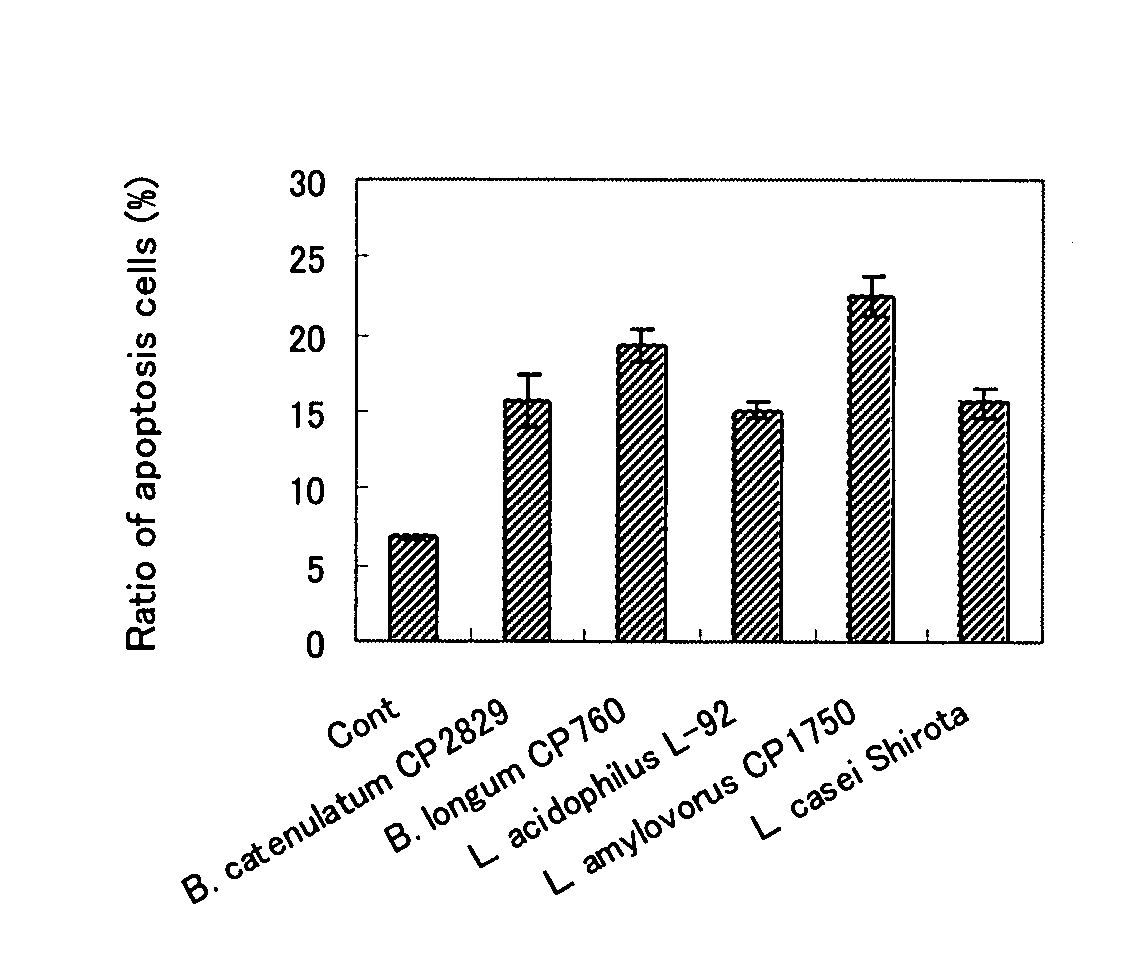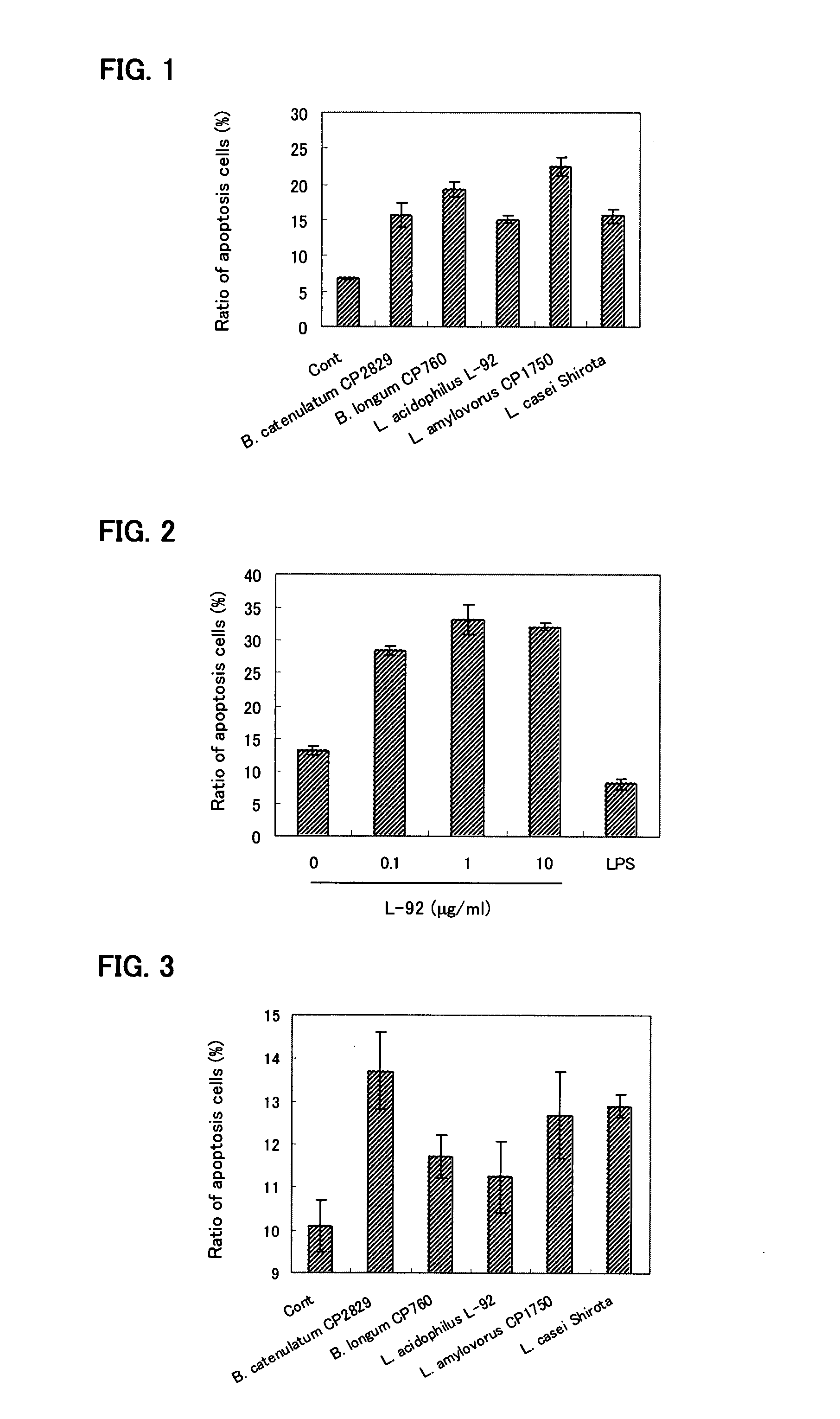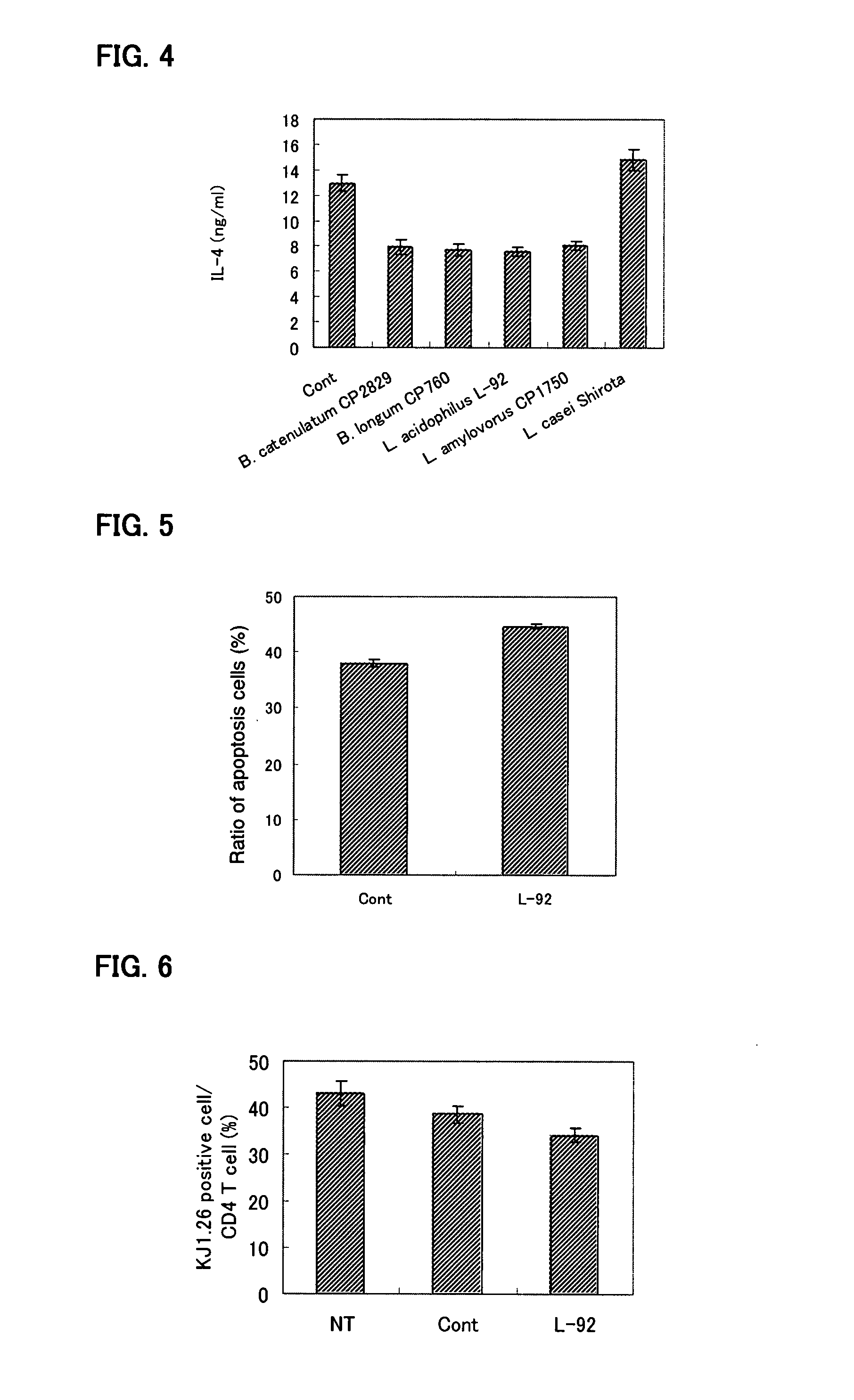T Cell Apoptosis Inducer
- Summary
- Abstract
- Description
- Claims
- Application Information
AI Technical Summary
Benefits of technology
Problems solved by technology
Method used
Image
Examples
example 1
Preparation of Lactic Acid Bacteria
[0034]Lactic acid bacteria belonging to the genus Lactobacillus and lactic acid bacteria belonging to the genus Bifidobacterium were cultured at 37° C. for 18 hours in MRS medium and GAM medium, respectively. After the culture, the lactic acid bacterial cells were collected by centrifugation, washed and lyophilized. The dried bacterial cells were suspended in a PBS solution, treated by heating at 100° C. for 10 minutes and used in the following experiments.
example 2
Induction of Apoptosis of Naive T Cells
[0035]Preparation of cells: The spleen was excised from a DO11.10 TCR-transgenic mouse bearing αβ-T cell receptor (TCR) gene derived from a T cell clone DO11.10 that I-Ad restrictively recognizes a region between the 323rd and 339th residues of ovalbumin (hereinafter referred to as OVA), and a single cell suspension was prepared. CD4 microbeads (Militenyi Biotec) suspended in MACS buffer (PBS containing 0.5% bovine serum albumin and 2 mM EDTA) were reacted with the cell suspension at 4° C. for 15 minutes. After the cells were washed, positive selection was collected using a magnetic separation column (Militenyi Biotec) to prepare CD4-positive T cells. The spleen was excised from a BALB / c mouse and a single cell suspension was prepared. Thy1.2 microbeads (Militenyi Biotec) suspended in MACS buffer were reacted with the cell suspension at 4° C. for 15 minutes. After the cells were washed, the negatively selected cell fraction was collected using ...
example 3
T Cell Apoptosis in Dose-Dependent Manner
[0039]The preparation of cells and the detection of apoptosis were carried out in the same manner as in Example 2. The cells were cultured in accordance with Example 2, except that Lactobacillus acidophilus L-92 was used at concentrations of 0.1, 1.0 and 10 μg / ml as heat-killed lactic acid bacterial preparations.
[0040]The test results are shown in FIG. 2. It was observed that Lactobacillus acidophilus L-92 induces T cell apoptosis in a dose-dependent manner.
PUM
 Login to View More
Login to View More Abstract
Description
Claims
Application Information
 Login to View More
Login to View More - R&D
- Intellectual Property
- Life Sciences
- Materials
- Tech Scout
- Unparalleled Data Quality
- Higher Quality Content
- 60% Fewer Hallucinations
Browse by: Latest US Patents, China's latest patents, Technical Efficacy Thesaurus, Application Domain, Technology Topic, Popular Technical Reports.
© 2025 PatSnap. All rights reserved.Legal|Privacy policy|Modern Slavery Act Transparency Statement|Sitemap|About US| Contact US: help@patsnap.com



